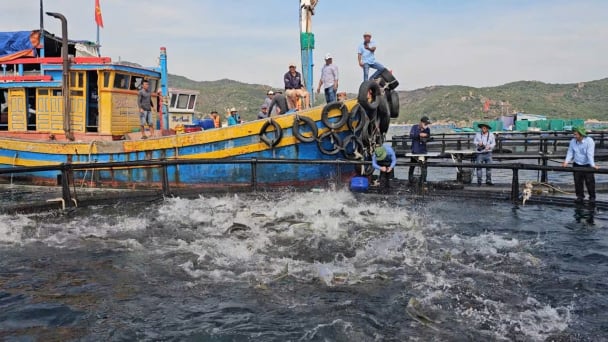May 20, 2025 | 11:00 GMT +7
May 20, 2025 | 11:00 GMT +7
Hotline: 0913.378.918
May 20, 2025 | 11:00 GMT +7
Hotline: 0913.378.918

Hai Duong province plans to develop more diverse leafy vegetables to serve export in the future. Photo: Tung Dinh.
Mrs. Luong Thi Kiem, Deputy Director of Hai Duong Department of Agriculture and Rural Development, said that the province's winter crop production area is about 22,000 hectares each year. Winter crops have an essential contribution to the growth and development of the agricultural sector.
"Winter crops are the enrichment crop of farmers in Hai Duong province. Therefore, in the past years and especially in the 2020-2025 period, the Provincial Party Committee and Provincial People's Committee have given very close direction, closely following the directions of the Ministry of Agriculture and Rural Development", Mrs. Kiem said.
According to Ms. Kiem, Hai Duong province has directed the agricultural sector to concretize the industry's programs, policies, and orientations in the annual plan, as well as the direction of the agricultural industry and rural development.
Up to this point, the winter crop area of Hai Duong province for soy sauce production is favorable. Some early winter crops have begun to be harvested, including kohlrabi, cabbage, and leafy vegetables from Hai Duong province.
Hai Duong's winter crop products serve both the domestic market as well as the export market. Prices at this time are equivalent to the same period last year.
"Farmers in large-scale commodity production areas are focusing on taking care of winter crops and preventing pests to both ensure crop protection and also maintain food hygiene and safety," Mrs. Kiem added.
As a province in the Red River Delta, many areas in Hai Duong province have a tradition of cultivating winter crops. Therefore, farmers are aware of producing safe products to build a brand for Hai Duong province. Besides, it is economic efficiency.
Currently, Hai Duong has planned many commodity production areas, such as carrots in Cam Giang district and onions and garlic in Kinh Mon town. Ms. Kiem said that the general direction of Hai Duong province is that winter crop products will serve export. For example, 90% of carrot production is for this work.
Hai Duong has planned about 1,500 hectares of land for specialized carrot cultivation. In addition, people in many places, including Cam Giang district, also go to other localities to rent more farmland, with a total area of about 500 hectares. The land area where Hai Duong people grow carrots each season is about 2,000 hectares, with a yield of about 10,000 tons.

Hai Duong also determined to develop only the production of crops that truly enriched farmers.
In recent years, the export of carrots from Hai Duong province to other countries, especially developed countries such as Korea or Japan, has been very favorable. However, Hai Duong province admitted that the overall output of some specific commodity groups is not large enough.
Therefore, when compared with a few other countries, Hai Duong agricultural products in particular, and Vietnamese agricultural products in general, still have some limitations in technology, support resources, as well as supply and distribution market.
"We take the target market as the technical standard to return to being a manufacturing organization. In addition to carrots, we have other crops, such as onions and garlic, mainly for the domestic market and processing. Hai Duong is also expanding new crops such as potatoes," the Deputy Director of Hai Duong Department of Agriculture and Rural Development continued.
Hai Duong agricultural industry has determined to use VietGAP standards to organize production. Because production is scheduled based on market demand, it is advantageous for businesses to consume domestically or export.
Hai Duong also determined to develop only the production of crops that truly enriched farmers. As for crops with low economic value, areas that do not have the conditions to organize production or lack workers, labor, and other conditions, the province does not encourage them.
In addition to the main crops with high economic value, enriching farmers and increasing the production value per hectare of agricultural land in conditions where land is increasingly shrinking, Hai province Duong also intends to expand more crops that can be mechanized and produced.
One of them is the potato plant. This plant has a short growing period, is grown in winter, and can be invested in mechanization. Through research, the consumer market for potatoes is also very stable and brings an economic value of hundreds of millions of VND per hectare.
In the winter crop of 2023 - 2024, the Hai Duong Provincial People's Committee supports the expansion of more than 400 hectares of winter crops in 6 districts and cities. Tu Ky district has 250 hectares supported, the most in the province. Chi Linh City was supported by 70 hectares.
Other districts, including Nam Sach, Kim Thanh, Gia Loc, and Cam Giang, each received support from 10 - 30 hectares. Businesses, cooperatives, and individuals participating in expanding the area of winter crops are supported with VND 4 million/hectare of additional winter crops.
Translated by Tuan Huy

(VAN) Khanh Hoa is investing over 545 billion VND to develop 240 hectares of high-tech marine aquaculture in order to guarantee a consistent supply of seafood exports and achieve the USD 1 billion target.

(VAN) Minister of Agriculture and Environment Do Duc Duy held a meeting with Soopakij Chearavanont, Chairman of C.P. Group, on May 15.
/2025/05/16/3800-0-nongnghiep-143756.jpg)
(VAN) Suntory PepsiCo Vietnam coordinated with the Ministry of Education and Training to implement an education program on water conservation, reaching nearly 1 million primary school students nationwide.

(VAN) Vietnam’s TH Group officially put its high-tech fresh milk processing plant into operation in the Russian Federation, marking a historic moment as the first TH true MILK cartons were produced in Russia.

(VAN) Use of high-quality broodstock and biotechnology is regarded as the most effective approach to ensuring sustainable and economically viable shrimp aquaculture ahead of climate change and the emergence of increasingly intricate disease patterns.

(VAN) Carbon farming is a form of agricultural practices that helps absorb more greenhouse gases than it emits, through smart management of soil, crops, and livestock.

(VAN) This is a key content of the Memorandum of Understanding recently signed between the Vietnam Fisheries Society and Kunihiro Inc of Japan.